This page is in process
On this page… (hide)
- Invitation to Inauguration of Tap Tap Garden
- Haiti: Seven Places Where Earthquake Money Did and Did Not Go
- Poems from Haiti by Daniel Tillias
- Violence Against Woman in Haiti
- Christophine
- Images of Haiti
- Reflections on Haiti - Ayiti
- REFLECTIONS FOLLOWING A DELEGATION: HOW MINUSTAH HURTS HAITI
- Where is the Money?
Invitation to Inauguration of Tap Tap Garden
This is the most recent sign of hope coming out of Haiti from our friend Daniel Tillias.
To all friends of HOPE who will be in Haiti this week.

Tap Tap Garden
On behalf of Pax-Christi Ayiti, Bochika and SOIL it is our pleasure to invite you as an esteemed guest to the grand inauguration of the Jaden Tap Tap (Tap Tap Garden) and EcoSan Toilet in Cite Soleil on January 22, 2012. As a leader and advocate for the community, we would be most honored by your attendance at this incredible formal launch of this community-driven urban agroecology program. The program launch is a testament to the power of positive change in Haiti, particularly in Cite Soleil, and a significant milestone for those who most benefit from the program, especially the youth members and residents of the nearby displacement camp Michiko. It is with incredible respect for your position that we request your attendance at the inauguration.
The Jaden Tap Tap is an acre of former landfill that now symbolizes hope, empowerment, education, and opportunity for the surrounding community. This bountiful garden already has more than 500 brightly painted tires used as planting beds for nutritious fruits and vegetables, a flower garden, and a nursery with over 1000 Moringa saplings. The Jaden Tap Tap is a model for urban agriculture for the neighborhood, country, and the world – demonstrating that bountiful, nutritious gardens can be grown in even the harshest conditions.
The celebration begins at 10 am on Sunday January 22, 2012 and will include a performance by the internationally recognized Haitian musician BelO, food and drink, agricultural demonstrations, youth presentation and performances, and the inauguration of a new community Eco-San toilet, the newest of SOIL’s Eco-San toilets that are providing essential sanitation services to over 70,000 people in urban and rural Haiti. We hope that you will accept our invitation to join us in celebrating the Jaden Tap Tap by placing your RSVP at http://conta.cc/TapTapEvent. Please visit http://bochika.org/taptap to learn more
Haiti: Seven Places Where Earthquake Money Did and Did Not Go
by Bill Quigley and Amber Ramanauskas
Poems from Haiti by Daniel Tillias
Daniel TILLIAS / (Guacanagarik) was the translator for the SOAWatch Delgation to Haiti, Oct. 1-Oct.8th. Daniel is from Cite Soleil, Daniel is co-owner and Translation Specialist of Tap tap Translation and Transportation, Project Director of Pax Christi Haiti.
Violence Against Woman in Haiti
by Ken Jones on Z Net Saturday, November 26, 2011
One thing that struck me about Haitian women was their incredible sense of dignity, their beauty and grace. They stand out among other Latino-Caribbean women, as even their way of dressing is so much more modest. Every day I would watch them balance these incredible loads on their heads - 200 eggs, dozens of bananas, an entire row from the vegetable aisle of a local supermarket. But their step, on those rutted, potholed streets, always seemed so light and graceful, their dignity radiated. I wonder how many Haitian women hold positions of power. I sense that it would be a very different country if more did.
Lisa Sullivan, School of the Americas Watch delegation to Haiti, October 2011
In the midst of the earthquake tragedy, occupation by UN troops, foreign economic exploitation and the supposedly elected colonial government, the women of Haiti continue to struggle for their safety and human rights. The majority of these women are economically marginalized and thus on the receiving end of systemic poverty, rape, and violence, it is a tragedy of monstrous proportions. But these women are not simply playing the victim. Ever since the sexual violence during the military regime from 1991 to 1994, Haitian women have been organizing to protect themselves and to seek justice and the basic necessities of life.
On a recent visit to Port-au-Prince, I was able to witness the situation of Haitian women and to hear first-hand accounts of what has been happening, especially in the tent camps that still remain, two years after the earthquake.
The conditions of the tent camps is deplorable by any standards. Officially, there are about 600,000 people living in these camps, but knowledgeable sources say that there are many more than that. The camps usually have very little food, no electricity, no health care, and often not even water or toilets - one survey conducted by a group of Haitian students shows that only 30% of the tent camps have water or toilets. The shelters are flimsy, normally made of tarps or canvas. There are criminals and gangs preying on people, especially women, with no security provided by the government or the occupying army (known as MINUSTAH, the United Nations Stabilization Mission in Haiti). It is a situation of desperation and despair.
Women living in these camps are hungry, unemployed, often taking care of children, and often traumatized by the violence inflicted on them, including rape and the threat of rape. Sometimes, women are forced to sell themselves just in order to eat.
Rape, a problem that had already gotten worse in Haiti since the first coup against President Aristide in 1991, has become acute since the earthquake. With no electricity, the tent camps are dark at night. With only canvas walls that can easily be sliced open by assailants and no security, women and children are extremely vulnerable.
The configuration of the camps creates unsafe conditions for women. People are living in unimaginable density – right on top of each other. There is no privacy and no sense of community. Women are afraid for their safety and very survival. What toilets exist are typically far away from the tents and going to them in the dark is very dangerous. Young girls have to take showers in the middle of the camp, which makes them more vulnerable.
These camps include many unemployed men (unemployment rate is 80%) and some criminals who were released from the prisons right after the earthquake.
Confronting this widespread situation is a host of grassroots women’s organizations who are working to empower and protect women. Conscious Women Fighting for the Development of Haiti (FEMCADH), Women Victims Get Up, Stand Up (FAVILEK), National Coordination of Direct Victims in Hiding (KONAMAVID), the Dialogue Group for Women Victims (GCFV) and the Commission of Women Victims for Victims (KOFAVIV) are some of the primary grassroots women’s groups working on these issues.
FEMCADH volunteers work in the tent camps – especially with women and young girls. They have registered many cases of rape, including rapes of children. Even handicapped people are being victimized, women who can’t walk. Women who press charges, while still living in the camps, are threatened and need to be protected from further attack and possibly being killed. “You can’t leave a victim in the place where the crime was committed,” one FEMCADH volunteer said. Some women’s organizations provide safe housing for rape victims, especially for those who are pressing charges.
One courageous woman with the group, a single mother, told the story of her 17 year-old child who had been abducted and raped. The child sat next to her as she spoke. One night, she said, men came into her tent and took her child away. They stripped her, drugged her, and kept her for 2 days, repeatedly raping her. They threatened her with dogs (the child stood and showed us the bites). They wouldn’t let her go to the bathroom. She bled for 9 days afterwards and is going to a psychologist now. The mother had been threatened as well. They had to go into hiding because the family of the man – who was now in jail – was after her. They have no male allies, only this organization of women.

Malya Villard-Appolon is a rape survivor
who co-founded KOFAVIV, an organization
that helps victims of sexual violence in Haiti.
KOFAVIV is an organization of women victims of gender-based violence working to help other women victims. Begun in 2004, it provides psychological and medical assistance, safe housing, food, free school, vocational training for teens, and a hotline. It also refers cases to the Bureau des Avocats Internationaux for legal assistance and accompanies the victims through that process. The group works with victims of rape, domestic violence and child slavery and with women who have been forced to work in prostitution. There are about 65 agents working in the organization.
KOFAVIV keeps a database of reported cases. Since the earthquake, there has been a big increase in violence against teens and children – as young as 17 months. From the beginning 2011 alone, there have been 350 cases in the database. 60% of the cases are children.
One successful effort initiated by KOFAVIV has been in getting men involved to help stop the violence in the camps. In one camp, the organization has been working with twenty-five men, educating them about gender-based violence so that they can educate other men. The men also patrol into the night. In this camp, there were once thirty to forty abuses every month, but now it has diminished to virtually none. Many of the men have had wives or daughters who were victims of violence.
One of the central problems associated with addressing the violence against women in Haiti is corruption within the justice system. Mario Joseph, director of the Bureau des Avocats Internationaux (BAI), a partner organization of the US-based Institute for Justice and Democracy in Haiti (IJDH), describes the issue:
The system doesn’t work for the poor. Only the rich get justice because they can pay for it. They pay their way out. Prisons are full of poor people… There is no rule of law. The nomination of judges is biased - congressmen constantly interfere with the process; the judiciary is not independent – judges can be fired by the executive, so they follow orders. Until just now, we have been five years without a Supreme Court.
There is also a gender bias built into the system, says Joseph: “Most judges are men. The perpetrators are men. In Haiti, it’s not so serious that you raped someone.”
One woman from KOFAVIV described how the lack of a justice system leads directly to crime against women: “In Haiti, we have no government. Justice is left to everybody. If they catch a rapist, he can just pay to get off. It’s corrupt; it’s bribery. When people pay to get out of jail, the bandits who have paid to get out then come to kill the women. There is total insecurity. They can ravage the women. Nothing is done about it.”
The BAI, established in 1994 by President Aristide, is a bastion for women who are fighting back against the violence. Consisting of lawyers and activists, the organization empowers female victims of gender-based violence to speak up for themselves in court and to pursue their human rights. BAI is committed not only to obtaining justice for women, but also to fostering an ongoing sense or agency and empowerment among its clients.
Since February 2000, at least two rape victims have come to BAI every week. This has included all ages, with children as young as a year and a half. Over the years, the BAI has been more and more successful at getting the police to make arrests for rape and at advancing the cases through the system. One activist tactic in past cases that has been effective in light of the broken system is to engage people outside of the courts during cases by carrying signs, speaking to the press, and organizing sit-ins.
The BAI also works to make it easier to get a doctor’s certificate to prove rape; collaborates with women’s advocacy organizations; accompanies women to the hospital, maintains contact with victims and their families; helps victims to find counseling, follow-up treatment, and if necessary, testing for STDs. It coordinates a weekly self-defense program for victims or women’s rights activists.
Cases have been referred to the BAI where MINUSTAH soldiers have raped or had sex illegally with young Haitian women. In one case, a raped woman became pregnant and the soldier subsequently took the child and left the country. In another case, not rape, a soldier who impregnated a young woman and then left the country is being pursued for child support. The parents of an 18-year old boy who was raped by Uruguayan soldiers have also come seeking assistance from the BAI.
The connection between gender violence and the MINUSTAH military occupation is apparent to Haitians. One woman matter-of-factly explained that rape and violence against women has always been used as a political and military weapon in Haiti: “Whenever there is a coup or a disturbance, it is the women who are the primary victims of violence. It is meant to send a message.”
Others pointed out that not only do the MINUSTAH soldiers commit sexual assaults themselves, but they also allow the perpetration of violence against women by refusing to provide security in some tent camps. “Armies exist to protect money, not the poor,” said one. It is well understood that because soldiers are free to commit crimes because they are given immunity from the law - they know nothing will happen to them if they commit a crime.
Some women’s voices about MINUSTAH:
“It has happened that when someone was raped right in front of their base, they just laughed. They themselves have made a lot of women pregnant.”
“MINUSTAH soldiers are paid so much they can spend their time at the beach, drinking, flirting with girls.”
“They don’t take care of Haitians. They can’t even speak our language.”
The only thing dreaded more than the existing presence of MINUSTAH is the prospect of its replacement by a Haitian army, something being promoted by President Martelly. It is felt that this would bring back the very same people responsible for many deaths and human rights violations in the Duvalier era and post-1991 coup regime - the Tonton Macoutes and the FRAPH.
Likewise, the only thing worse than living in the tent camps is getting evicted from them. Wholesale evictions and the clearing of camps is a recurring disaster in the here and now. Even though landowners don’t have legal title to the land, nor any judgments from a court, they arrive with no warning to evict people, accompanied by MINUSTAH troops and guns.
Where do the evicted people go? There are some 80,000 houses coded throughout Port-au-Prince as dangerous and ready to fall down. Many people who are evicted from tent camps end up in these dangerous houses. And yet, it is a tragic irony that these unsafe houses may in fact be safer for women than living in the tent camps.
Women in Haiti, in particular the many women in poverty, have been increasingly under attack in Haiti since the earthquake despite, or perhaps because of, the Haitian government, local police, or the United Nations troops. But many brave women continue to struggle for their safety and independence. With groups like FEMCADH, KOFAVIV, and the BAI working to support them, these women are not defeated. They are modern day freedom fighters, their steps on rutted roads light and graceful, their dignity radiating.
Christophine
by Susie Zeiger
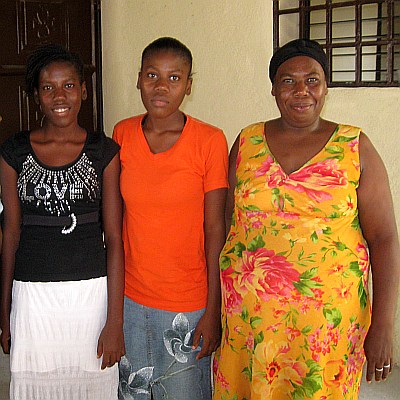
Christophine, Twin Sister
and Mother
Christophine is a lovely seventeen year old Haitian girl with the sweetest of smiles. She has a twin sister who doesn’t “pale bien,” speak correctly, according to their mother. She also has an older brother in his early 20’s. I don’t think their father is present.
When the earthquake of January 12th, 2010 occurred, Christophine’s family, along with over a million others, lost their home and were forced to live in a tent camp which held hundreds of internally displaced people from communities throughout Port-au-Prince. A good number of these Haitian tents are mere lean-tos fashioned with either bed sheets or tarps and may wash away when rain falls or tropical storms strike. In the afternoons you won’t find most camp residents in their tents since they trap the heat. I’ve been told that these tents can get as hot as 110 degrees during the hottest periods of the year.
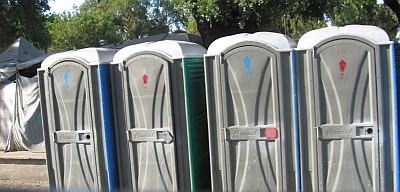
The sanitary conditions are beyond dreadful as well. Before OXFAM and other NGOs pulled out of Haiti there were free porto potties. Now the hapless half million or more who remain in the camps must often pay when they need to relieve themselves. When the NGOs originally placed these toilets in the camps they were put on the periphery of the unlit camps. If water is available there is also no privacy when camp residents need to bathe.
Children are often left alone in their tents when their mothers must leave to try to sell their goods in the market or to get food. There are few schools in the camps as well, so children must fend for themselves. Since whole communities were destroyed in the earthquake, camp residents can’t depend upon the kindness or help of their former neighbors who may be living at a camp far away. The fabric of community life was in large measure destroyed when the earth opened twenty-one months ago. While there are camps in which the residents were able to create infrastructure and organization, there are too many which are completely lawless.
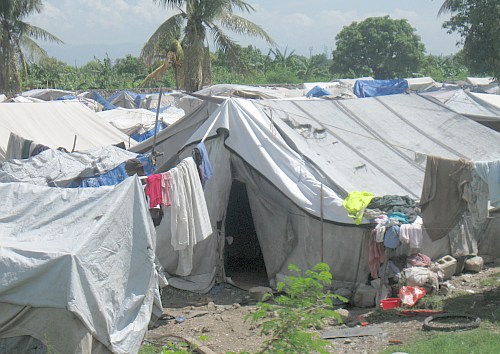
One late afternoon Christophine’s mother had to leave her daughter alone in their tent. Two zenglendo (criminals) cut through the family’s tent with a knife, blindfolded, then kidnapped the young girl at knifepoint and drove her to an undisclosed location where they cut off her clothes and raped her for two days straight, perforating her anus and never allowing her to relieve herself.
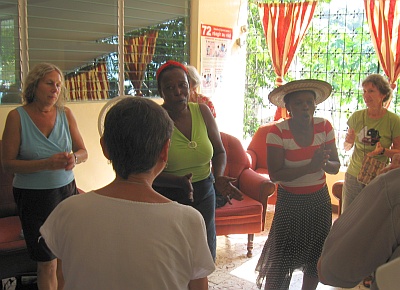
‘Fanm vanyan’ (courageous
women) in song & dance
with delagation
About a year ago the girl’s mother was able to get a modicum of justice for Christophine. One of the perpetrators was jailed and remains there to this day. However, since then the rapist’s family has threatened the mother and daughter with death. Their family is forced to sleep in a different location every few days. Fortunately they are supported and protected by a group of fanm vanyan (courageous women) from a women’s organization whose members themselves were victims of rape after the first coup d’etat against Aristide in 1991, the ensuing four years of military violence, as well as the second coup against Aristide in 2004.
When I signed up to be a participant in The SOAW (School of the Americas Watch) delegation to Haiti I did not volunteer to interpret for the group for two main reasons. While I’m a competent interpreter for medical and education translations, I’m not a good enough interpreter when it comes to the political and economic domain. Secondly, when I translate and have to deal with sensitive material I tend to space out when someone speaks for long spells.
Suffice it to say that since we had a very poor interpreter on our first day who was let go that very same day, I volunteered to translate the following day when Christophine’s mother told her daughter’s story. We were at the Bureau des Avocats Internationales, the headquarters of a group of dedicated, overworked lawyers. Before the mother spoke I had no idea what my pitch -hitting task would entail. As she recounted Christophine’s ordeal I recall shaking and biting my lower lip while I watched tears well up in the eyes of many of my fellow delegation members.
There was perhaps a nano second when I felt that I had to stop, but I willed myself to continue. A force stronger than myself overtook me and continued to flow through me. When Chrisophine’s mother pulled out her daughter’s cut up dress and underpants and burst into tears while becoming more and more agitated, I kept up the translation.
Afterwards I took both mother and daughter in my arms and embraced them, or perhaps they embraced me. I don’t recall. I told them how terribly sorry I was to learn of Christophine’s unimaginable ordeal. And minutes later, tears flowing from my eyes and the mother’s, we held hands and stared into each others eyes, the unspoken understanding that a mother must protect her children no matter what, and would rather die than have her child experience what this mother’s daughter experienced.
Images of Haiti
Watch a slide show of images from Haiti
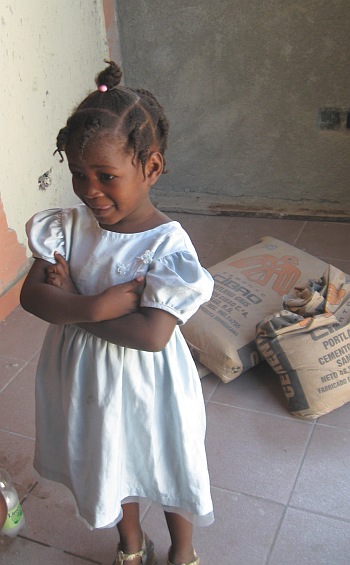
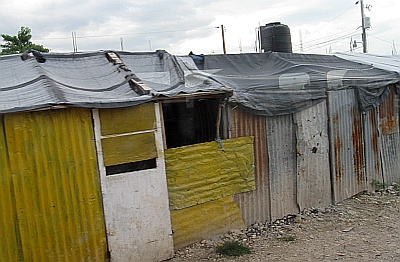
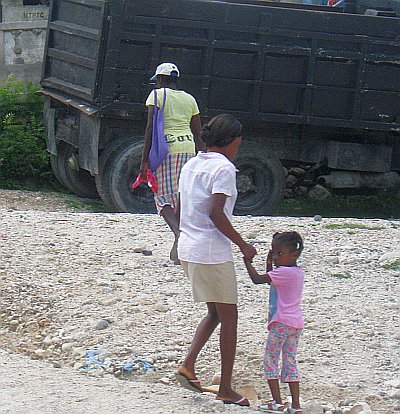
Reflections on Haiti - Ayiti
Article by Lisa Sullivan, poetry by Mary Anne Perrone
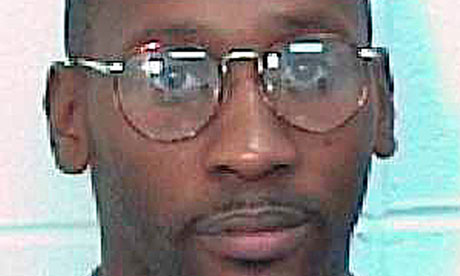
Yes, my name is Troy Davis,
but my name is also
Haiti
But Haiti is’t dead.
sentenced to death by
debt, coup, occupation, earthquake, cholera, and NGO
Haiti refuses to die
I have been back for ten days from Haiti. My report should have been written and sent off days ago. I usually start writing it before the plane’s wheels even lift off from the country I am visiting, trying to capture the experience while fresh. But Haiti is…………well, different.
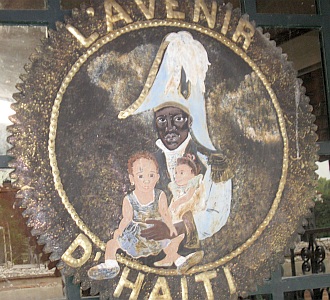
As I boarded the plane to leave Port-au-Prince ten days ago, I simultaneously couldn’t wait for the plane to lift off, and couldn’t stand the idea of leaving. I wanted to race down the jet-way, dash into the plane, and close the doors myself. I had never felt so hot, hungry, dismayed, depleted and defeated I did in Haiti.
But after setting into my seat, I was tempted to press the flight attendant’s button, explaining: I need to get off, now. I’ve left something behind: myself. There was something so stunningly spirited about the people of Haiti, just beneath that level of composure, just below that reality of raw suffering, and I needed to stay longer to understand, to drink from that fountain.
The last thing I could do on the plane was write. Or for that matter, think. Staring out the window as mountains-beyond-mountains gave way to the turquoise waters, I was awash in feelings. When the pilot got on the loudspeaker to talk about the weather on our “quick dash back to Miami”, all I could think was: how could it possibly be a quick dash? Haiti was the farthest place from home I have ever been. And I’ve been to China.
Haiti is all at once Africa 500 years ago, Spain 400 years ago, France 250 years ago, or – as one of our delegation’s participants said – perhaps the United States 50 years from now. It was all of those things and more. Mountains, oceans, earthquakes, Kreyol, first and only nation of slaves to battle for and win its liberation from its owners, last of all nations to still live collectively under slave masters from around the planet.
The first days after my return, my mind was in a fog. I simultaneously pushed and pulled thoughts of Haiti from me and towards me…….. Haiti is so near…….Haiti is so far; Haiti is a horror…….Haiti is an inspiration; Haiti is so broken……. Haiti is so alive; I never want to see Haiti again………. I can’t wait to get to Haiti again. How to sort out these opposing feelings?
But this morning, my mental fog lifted, like that of the Guaraira Repano mountain outside this window. And I realized that for me, Haiti-Ayiti is a sum of two opposites. There is Haiti, poorest country in the Western hemisphere, a hungry, occupied, unemployed, homeless and chaotic nation. And there is Ayiti (the Kreyol name for Haiti meaning sacred land) free, alive, bold, spirited, and held captive within its own people.
This opposing reality of Haiti-Ayiti reveals itself poco a poco. The first level takes about 30 seconds to see, and is found right outside the airport doors. Rickety “tap-taps” (Haiti’s rundown pick-ups that double as busses) race down rutted streets, clogging one’s throat with exhaust fumes while thrilling one’s eyes with the bright, intricate art work covering every inch of the tap-tap’s battered exteriors. It’s difficult to decide whether these vehicles should be sent to a junk yard or to an art museum. The streets teem with women balancing ridiculously large baskets on their heads, yet their step seems impossibly light, poised, even graceful.
After a day or two in Haiti another layer of contrasts is unveiled. Brand new SUV’s vying for road space with ancient cars and carts. Sky high prices in a county so poor. Multi-lingual Haitians without jobs. Planes filled with white people heading to an almost all-black country. When I posed these contradictions to Haitians, I received the same answer for different questions: NGO’s. Their international staff fills the planes, their luxury vehicles clog the streets, their big stipends drive up prices and their foreign workers bump out Haitians from the job of rebuilding their own nation. Not all NGO’s, however, seem to be made in the same image, and I found many extraordinary and dedicated young foreigners taking tap-taps and sharing their talents with Haitians, with humility.
A further layer of contrasts is even more disconcerting. Billions of dollars given to Haiti for earthquake reconstruction (via international agencies) , so little to show for it. Where did that money go? That was our question as we visited a few of the 200,000+ Haitians who remain housed in tents. Or when we had to hold our meeting with university students in the junkyard adjacent to their earthquake-battered buildings. Or when we drove through Cite Soleil, the poorest neighborhood in the hemisphere, devoid of any visible projects other than an enormous police station. Or as we drove through the tiny plywood housing structures built to relocate earthquake victims. (Most houses in my family’s Virginia neighborhood have sturdier sheds for their lawn movers.) The only decent housing we came across – solid cinderblock structures with small yards and individual water tanks - was built by the Venezuelan government.
Our questions about the money trail, however, went largely unanswered. The only big project that seemed to be underway was a multi-million-dollar luxury hotel. The justification given by its manager – the Clinton-Bush Haiti Fund, was that businessmen hoping to invest in Haiti will need a nice place to stay.
However, we soon discovered there is one very visible presence brandishing the incredibly large sum of 2 million dollars a day that the international community injects into Haiti. New housing? Schools? Hospitals? Roads? A sewage sytem? No, no, no, no and no. It’s the presence of 13,000 troops and police from around the world, known collectively as MINUSTAH, the French acronym for the United Nations Stabilization Mission in Haiti. And, this money flaunts itself on almost every street. It is visible in the armored tanks and trucks filled with MINUSTAH soldiers, pointing their state-of-the-art weapons into the streets, and often at people. MINUSTAH camps surround the enormous US embassy, MINUSTAH soldiers patrol the poorest of neighbors, and MINUSTAH police stop cars at check points throughout the city. If you’re not on your toes in Haiti, you might actually think your plane mistakenly landed in Iraq or Afghanistan.
The sense one gets from looking at the MINUSTAH soldiers is that Haiti, the poorest country in the Western Hemisphere, is under occupation by the entire world. There are soldiers from Africa, Asia, Europe, the Caribbean, and the Americas. Just about every skin color is to be found on the omnipresent trucks and every language spoken……..except the language spoken by Haitians themselves: Kreyol. When we asked rape victims from the tent camps if the presence of MINUSTAH troops made them feel safer, the answer was no. They told us that even if they wanted their help, they wouldn’t be able to communicate. Particularly disconcerting is the participation of soldiers from countries whose core discourse is the defense of a nation’s sovereignty, such as Bolivia, Ecuador, Argentina, and Uruguay
Few of the MINUSTAH forces are from the US, but according to “wikileaked” cables from the State Department, the US government is delighted to have so many proxies to enforce their will. One cable states: The UN Stabilization Mission in Haiti is an indispensable tool in realizing core US government policy interests in Haiti. Another cable says, more bluntly: It is a financial and regional security bargain for the U.S. government.
If occupation of a sovereign nation by foreign military were not enough disturbing enough, try this: The recent outbreak of cholera affecting tens of thousands of Haitians and killing over 5,000 has been proven to have been introduced to Haiti by the Nepalese contingent of MINUSTAH. Or this: footage was recently found of Uruguayan soldiers raping a young Haitian, acknowledged by Uruguay’s Defense Minister. Rather than protect victims of rape, MINUSTAH is contributing.
The overriding question that this left our delegation was quite simply: why? What does broken-down, poverty-stricken, earthquake-shaken Haiti have that merits occupation by the world’s armies? What provokes the UN to defy its very charter that forbids sending peace keeping forces unless there is some armed conflict (none in Haiti). Even the favored pretext of the drug war can’t be used. Compared to most of its neighbors, Haiti’s crime rates and drug trafficking are of minor proportions. Or, maybe it’s Haiti’s very proximity to the next island over: Cuba, whose port nearest to Haiti is Guantanamo.
Actually, I wonder if what the world’s armies are trying to hold at bay is the very spirit of Ayiti. The spirit of the hemisphere’s first free black nation tearing away again its chains. The Ayiti of Toussaint-Louverture who led slaves to unite and defeat the army of Napoleon’s army. The Ayiti of Jean-Jacques Dessalines, who opened his nation’s doors to slaves around the world seeking freedom. The Ayiti that aided Simon Bolivar in his liberation of South America.
But in spite of the occupying armies, Ayiti refuse to die. It is kept alive by Daniel, who organizes children from his native Cite Soleil into soccer teams bearing names of peace activists. And by Christofa, who was gang raped in the tent camps for 2 days and nights but who exudes hope, love, and determination. Ayiti lives on in Rhea, who walked through the earthquake rumble to find all her students and continues to defeat the odds, keeping kids in her school. Ayiti raises its fist in Oxigen, whose passion for his country’s sovereignty could spark a second independence. And it finds dignity in Mario, who refuses to let death threats prevent him from seeking justice for the poorest of his land.
This is the real Ayiti. And it is only the people of Ayiti itself who will call this liberation forward. But those of us who hail from the dozens of nations* whose armies and police occupy Haiti, we do have one piece. As we take to the streets to Occupy the halls of power and reignite hope in the U.S., let’s remember to call for the De-Occupation from Haiti. And for those us in the South, as we follow the dreams of Simon Bolivar to consolidate the new sovereignty of South America, let’s return the 200-year-old favor. Let’s release our end of the chains.
Ayiti Toma, Sacred land that is our land.
Haitian Scriptures
“who among you
when your child asks for bread
would give them a stone?”
‘Jesus of Nazareth ’
Who among you….
when your neighbor
cries out
for clean water and shelter
would send an
occupying army?
in response to pleas
for protection in dangerous times
would finance agents of sexual violence?
when natural disaster of unimaginable proportions
befalls the population
would renege on promises
of aid
and instead use relief funds
to build
a luxury hotel?
who among you?
who among us?’‘
Haiti’s World Occupation Force: Countries providing military and police to MINUSTAH;
Argentina, Bangladesh, Benin, Bolivia, Brazil, Burkina Faso, Burundi, Cameroon, Canada, Central African Republic, Chad, Chile, China, Colombia, Côte d’Ivoire, Croatia, Egypt, Ecuador, El Salvador, France, Grenada, Guatemala, Guinea, India, Indonesia, Jamaica, Japan, Jordan, Kyrgyzstan, Lithuania, Madagascar, Mali, Nepal, Niger, Nigeria, Norway, Pakistan, Paraguay,
REFLECTIONS FOLLOWING A DELEGATION: HOW MINUSTAH HURTS HAITI
by Becca Polk published in “This Week in Haiti”, the English section of HAITI LIBERTE newsweekly
During the first week in October, I took part in a human rights delegation to Haiti led by the U.S. grassroots organization “SOA Watch.” The delegation of 17 activists from around the U.S. wanted to gain firsthand knowledge about the UN Stabilization Mission in Haiti (MINUSTAH), a military occupation force of 13,000 troops and police. We also saw numerous initiatives being organized by Haitians to promote their nation’s dignity and sovereignty.
SOA Watch monitors and protests the activities of the U.S. Army’s School of the Americas (SOA), based at Ft. Benning, Georgia, where the officers of repressive Latin American military and police forces,including Haiti’s, are trained. (In January 2001, the school was renamed the Western Hemisphere Institute for Security Cooperation.) I work in the Washington, DC office of SOA Watch, which carries out its work through vigils and fasts, demonstrations and nonviolent protest, as well as media and legislative work.
The conversations and encounters that I had on this delegation to Haiti have inspired me and touched my heart, changing my perspective on the world. While I do not represent the whole delegation or even SOA Watch, I would like to share some reflections about the numerous meetings we had and things we witnessed.
We observed MINUSTAH tanks, soldiers and police patrolling every corner of Port-au-Prince, where Haitians eke out basic survival amidst earthquake rubble.
The UN Security Council deployed the MINUSTAH in June 2004 to replace the U.S., French and Canadian troops which occupied Haiti following the coup d’etat (supported by those same nations) against former President Jean-Bertrant Aristide.
According to its mandate, the MINUSTAH should focus on training and strengthening the Haitian National Police. But, in reality, we observed that MINUSTAH is primarily a military mission which provides security, not for Haiti’s people, but rather for foreign companies (including most of the large NGOs) and Haiti’s business elite.
“It’s an occupation force that doesn’t help the people,” a representative from the “Grassroots Coalition against MINUSTAH” told us. “They terrorize the people in the poor neighborhoods, they say they are here to help the people of Haiti who are in misery, and their sole objective is to support the multinationals and the bourgeoisie in Haiti.”
Our delegation learned how militarization is often justified as providing security for humanitarian assistance. For example, 22,000 U.S. troops and an additional 4,000 UN troops were deployed to Haiti following the Jan. 12, 2010 earthquake. But other than a few token efforts, those troops did not generally help to save lives, remove rubble, or rebuild homes. They primarily patrolled streets and guarded businesses, supposedly to prevent “looting.”
The UN troops, we were told, have often conducted deadly raids in Haitian shantytowns and against anti-coup demonstrations. In short, the MINUSTAH represses the very people it pretends to protect.
Although some people feared that security might degenerate if MINUSTAH leaves, the vast majority of Haitian grassroots groups agreed that MINUSTAH is causing more harm than good.
The UN spends $2 million a day to deploy MINUSTAH in Haiti, while hundreds of thousands of Haitian earthquake victims remain homeless and destitute.
We heard about cases where Haitians had been sexually abused by MINUSTAH troops and how others had contracted cholera, a now epidemic disease which Nepalese UN soldiers brought to Haiti one year ago. Cholera has now killed over 6,500 Haitians and sickened over 420,000.
“The police and MINUSTAH don’t come out at night,” said one woman out of several who had been victim of sexual violence in the tent camps. Her statement was quickly affirmed by many nodding heads in the meeting we held with several women’s organizations. It became clear to me through many conversations like these that MINUSTAH troops do not protect women from rape or stop other crimes. On the contrary, we heard testimony of how UN soldiers had committed rape and other sexual violence.
We also heard testimony that MINUSTAH troops have aided in the illegal evictions of tent city residents, violently repressed demonstrations, and attacked some of Haiti’s poorest communities. Far from a neutral party, the UN took the side of the coup-produced government from 2004 to 2006, aiding in the repression of the Lavalas Family, Haiti’s largest political party, and in maintaining that party’s leader, Aristide, in exile. This constitutes repression of Haitian sovereignty, not democracy promotion.
Even the legality of MINUSTAH’s mandate is questionable, we learned from Haitian lawyers. Haiti has no civil war and is no threat to international peace and security. Furthermore, under an agreement signed by Haiti’s illegal coup government and the UN, MINUSTAH troops cannot be tried in Haitian courts for violations of human rights.
However, UN troops have routinely violated Haitian’s human rights. We visited Cite Soleil and were shown the thousands of bullet holes that still pockmark buildings following massacres carried out by MINUSTAH troops from 2005 until 2007.
We were told the story of a young man in Cap Haitien who was found hanging from a tree after the alleged mistress of a MINUSTAH commander falsely accused him of stealing money; the day after his death, she found her misplaced purse. When a Haitian judge tried to look into the case, the UN brass blocked the investigation.
MINUSTAH’s “presence helps perpetuate their staying,” one woman told us. “They should leave because they are wasting resources and not fixing anything. MINUSTAH money should instead train more police and security forces, and go to creating more jobs.” The overwhelming message we received: The MINUSTAH is in Haiti to maintain the status quo, which features a huge chasm between rich and poor.
SOA Watch helped initiate a recent letter to Latin American governments, signed by a number of prominent Latin American intellectuals, academics and human rights defenders, demanding
MINUSTAH’s immediate withdrawal.
Also, our delegation released the following statement: “Members of U.S.-based human rights, legal, faith-based, and policy organizations call for an end to foreign intervention in Haiti today, including the withdrawal of the UN Stabilization Mission in Haiti, MINUSTAH.”
Many Haitians we spoke to were also concerned that the current President Michel Martelly wants to bring back the Haitian army, which Aristide dismantled in 1995. The former Haitian army, which was set up by the U.S. Marines following their 1915–1934 military occupation, was a corrupt and brutal force, responsible for many coups and massacres. It never protected Haiti against foreign states; it only repressed and terrorized the Haitian people.
The new force that Martelly proposes would cost $95 million annually to start. This is money Haiti cannot afford, for a force the Haitan people do not want or need, people told us.
Haitians we spoke with also denounced NGOs that purport to “help the people” but which are, in their view, corrupt and parasitical. The NGOs spend more on overhead and living expense than they do on providing aid. Many of these same NGOs participated in the coup against President Aristide by financing the opposition and writing reports filled with disinformation that contributed to a pro-coup media campaign. Many of these NGOs also support the neoliberal agenda which is destabilizing democracy in Haiti.
Haitians provided great inspiration for continuing our social justice work and organizing here in the U.S.. Their history is inspirational: the only successful slave revolution routed the most powerful army at the time, and then, as a free nation, provided support and safe refuge for anyone fighting slavery and colonialism, including Simon Bolivar, who led the freedom struggles on the South American continent.
This heroic history has instilled a resilience in Haitians that you can see in the faces of women as they balance huge baskets on their heads, or in the faces of children playing soccer in the dust of Cite Soleil.
Despite their near total lack of financial support, many Haitian grassroots organizations continue fighting, interacting and empowering the poorest and most disenfranchised sectors of Haitian society in the pursuit of jobs, water, food, housing, and security. One representative of MOLEGHAF (Movement for Liberty and Equality by Haitians for Fraternity) told us that “there cannot be freedom if people’s basic needs for survival are not respected and met.” Others whom we interviewed repeated this several times during our visit.
No amount of studying or analysis beforehand can prepare you for the situation in Haiti. My conclusions after this, my first trip to Haiti, are clear and straightforward: I support Haitians’ demand for sovereignty and believe they have the right to govern themselves. We must support lawyers working both to bring justice for crimes of the past but also to empower people to change their own futures. We must support student groups working for justice and reparations for victims of MINUSTAH violence and cholera. We must support Haitian journalists working to investigate injustice and give voice to the Haitian people’s concerns. We must support Haitian women’s organizations working on issues of rape and gender imbalance. I support the demands from all quarters for “solidarity, not a military force,” solidarity like the doctors provided by Cuba and the petroleum provided by Venezuela. I hope that people from the international grassroots community will join in the call that international money raised for Haiti be spent on Haitian initiatives to benefit the Haitian people, and not on military occupation and economic initiatives that benefit the international and Haitian ruling elite.
I have learned how the U.S. government has worked to undermine rather than to build democracy in Haiti. The strategies to solve these problems are complicated and not mine to determine. But I will continue to support the organizations working with the Haitian people for democracy, justice and sovereignty.
Becca Polk works at SOA Watch in Washington, DC and can be reached at .
Where is the Money?
Report from Haiti By Bill Quigley
Sunday, October 09, 2011
Broken and collapsed buildings remain in every neighborhood. Men pull oxcarts by hand through the street. Women carry 5 gallon plastic jugs of water on their heads, dipped from manhole covers in the street. Hundreds of thousands remain in grey sheet and tarp covered shelters in big public parks, in between houses and in any small pocket of land. Most of the people are unemployed or selling mangoes or food on the side of every main street. This was Port au Prince during my visit with a human rights delegation of School of Americas Watch – more than a year and a half after the earthquake that killed hundreds of thousands and made two million homeless.
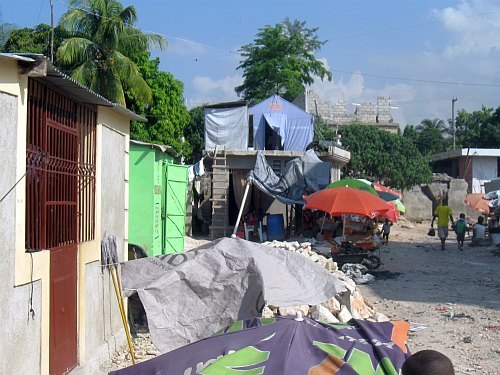
What I did not see this week were bulldozers scooping up the mountains of concrete remaining from last January’s earthquake. No cranes lifting metal beams up to create new buildings. No public works projects. No housing developments. No public food or public water distribution centers.
Everywhere I went, the people of Haiti asked, “Where is the money the world promised Haitians?”
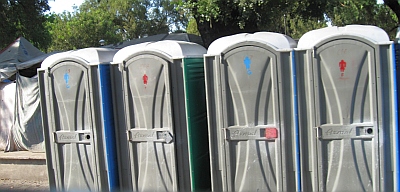
The world has moved on. Witness the rows of padlocked public port o lets stand on the sidewalk outside Camp St. Anne. The displacement camp covers a public park hard by the still hollow skeleton of the still devastated St. Anne church. The place is crowded with babies, small children, women, men, and the elderly. It smells of charcoal smoke, dust and humans. Sixty hundred fifty families live there without electricity, running water or security.
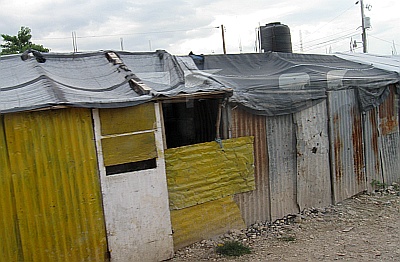
I talked with several young women inside the camp of shelters, most about eight feet by eight feet made from old gray tarps, branches, leftover wood, and pieces of rusty tin. When it rains, they stand up inside their leaky shelters and wait for it to stop. In a path in front of one home, crisscrossed with clotheslines full of tiny children’s clothes, a group of women from the grassroots women’s group KOFAVIV told us Oxfam used to help administer the camp but quit in May. When Oxfam left, the company that had been emptying the port o lets stopped getting paid and abandoned the toilets. Some people padlocked them and now charge a couple of cents to use the toilets, money most residents don’t have. There is no work to earn the money for pay for toilets. The Red Cross has just visited the camp that morning telling them they would be evicted October 17. Where will they go, we ask? We have no idea they told us. Jesus will provide, they told us.
Where has the money raised for Haiti gone? What about the Red Cross? What about the US government? What about the money raised in France, Canada and across the world? What about the pledges to the UN? Where is the money? The people of Haiti continue to be plagued by the earthquake of more than 20 months ago. They are our sisters and brothers. They deserve answers. They deserve help.
Bill is a law professor and human rights lawyer at Loyola University New Orleans and with the Center for Constitutional Rights. He volunteers with the Institute for Justice and Democracy in Haiti and the Bureaux des Advocats in Port au Prince. You can reach him at quigley77@gmail.com.